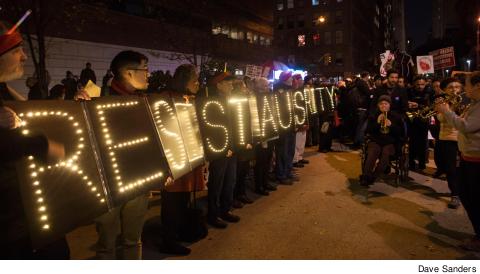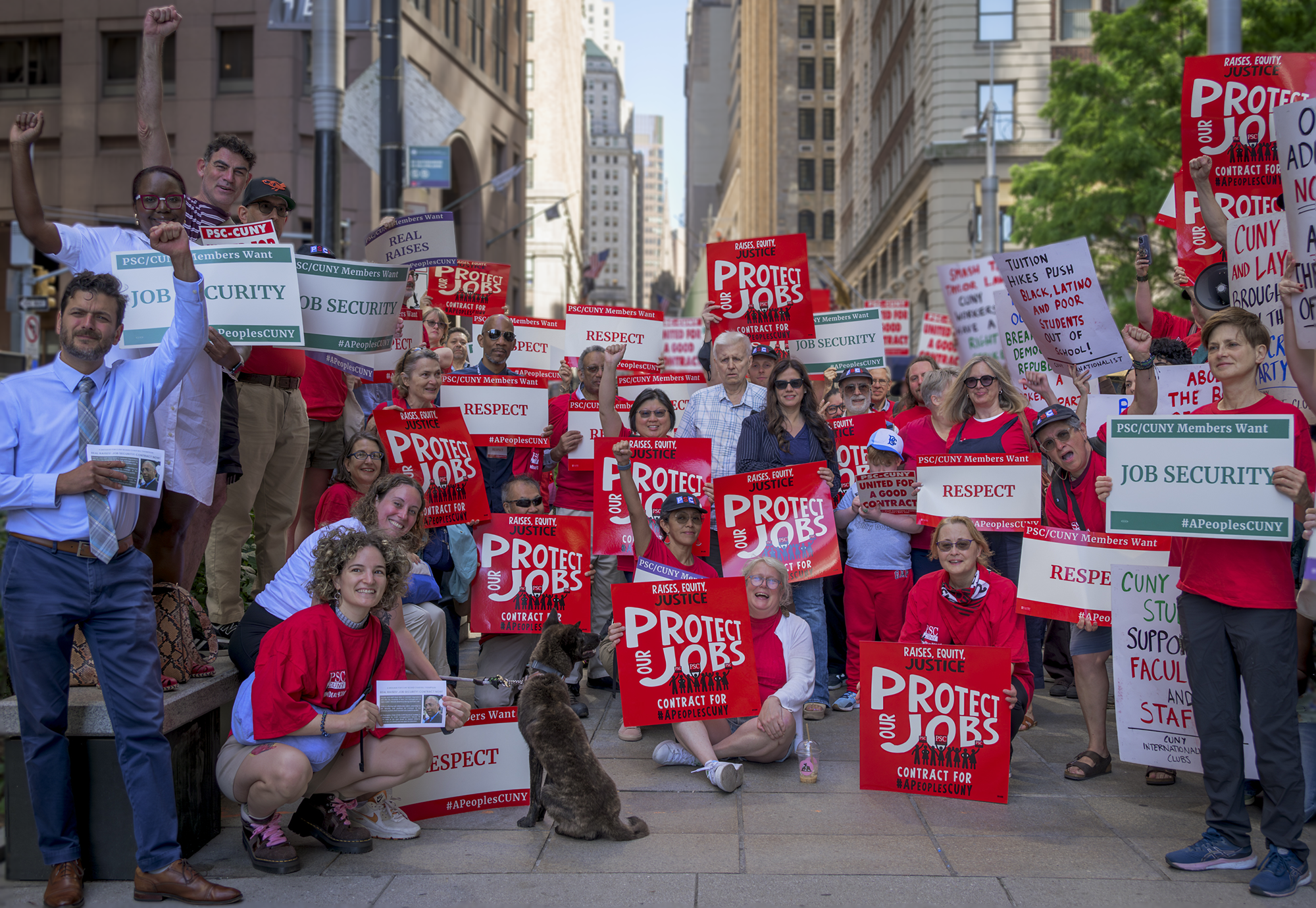 |
“I almost wept.” That was how one Lehman College professor responded to the contractual teaching load reduction.
There was no need to ask why. The reduction in the teaching load changes a fundamental condition of work for full-time faculty. But it also changes how the union is positioned to take on other challenges to the assumption that CUNY will always be poor – especially the campaign for $7,000 per course for adjuncts.
The teaching load reduction agreement phases in a change in the number of hours full-time faculty are contractually required to spend in the classroom – and therefore the number of hours they cannot spend doing everything else: mentoring students, writing recommendations, developing their own work as scholars. Even though not every full-time faculty member will instantly see his or her teaching load reduced by three hours, the change represents recognition by CUNY management that the current teaching load sabotages our ability to do our jobs. Full-time faculty will be more productive with a lower contractual teaching load because we will be able to devote more time to our students’ work and our own. The reduction will change full-time faculty’s professional lives, make CUNY more competitive nationally and deeply benefit our students.
A WIN FOR STUDENTS
The reduction will create more time for our own research and scholarship, the fruits of which we bring into our classrooms. CUNY students will have greater access to the kind of mentoring, guidance and individual support that is the norm in better-funded colleges and for higher-income students. Multiple studies nationally about time spent with students suggest that reducing the teaching load will have a measurable effect on students’ ability to stay in college and graduate with the degrees they seek.
Those are huge gains, and they are the reason the union fought so tenaciously for the reduction. But I heard something else in the Lehman professor’s response. I think she was registering that we had finally beaten a condition of austerity.
At a time when almost all industries, including higher education, are being defined by speed-up and when public higher education managers focus more on quantity than quality, a reduction in the contractual teaching load goes gloriously against the grain. It signals that austerity can be beaten, that an aspirational demand can be achieved. As we press to achieve what some of our critics call unrealistic goals – like the proposed increase to $7K per course for adjuncts – we should learn the lessons of this fight.
How did the PSC achieve a goal it pursued for over 30 years? We organized; we used the power of the union and we didn’t give up.
A LONG CAMPAIGN
You will see on pages 6 and 7 of this issue some of the milestones in our campaign. (And it’s also worth reading, in this context, about the progress in implementing another major accomplishment of the last contract, advances for HEOs, described on page 9.) The current PSC leadership started campaigning for the teaching-load reduction in the 2000-2002 contract, and we made the first inroads there, for two colleges with anomalous loads, City Tech and Staten Island. Then full-time faculty at colleges throughout CUNY, but especially at the community colleges, organized, met, pressed their presidents, demanded change. Years of organizing followed, with an exceptional effort at City Tech, a senior college that had had a community college teaching load. The strategic, collaborative efforts of full-time faculty at City Tech, accompanied by beautiful testimony about what the change would mean for their students, resulted in a breakthrough in 2013.
VARIOUS TACTICS
Heartened by these victories, and as the fight for the last contract heated up, the union organized scores of faculty – and several students – who testified at City Hall and the CUNY Board, bearing witness to the way the high teaching load prevented us from serving students as we should. Members on campuses demonstrated in support. PSC bargaining team members and staff spent hundreds of hours determining the cost of different ways of implementing a teaching load reduction, and had these numbers ready for final contract negotiations. Thousands of faculty members sent messages to Chancellor Milliken in a single weekend as the last round of bargaining came to a close, demanding that a reduction in the teaching load be part of the deal. More than 200 department chairs later sent a letter calling on the university to implement the change.
What finally turned the tide was the strike authorization vote. The 92 percent vote gave the PSC bargaining team the ability to say, and be believed, that we would not settle without progress on the teaching-load demand. CUNY management knew they had to take us seriously. Every person who voted “yes” on that question, and every member who urged other members to vote, gave power to the bargaining team. It was your organized action, supported by union resources and years of grassroots member-driven organizing, that enabled us to accomplish something that had eluded the PSC for 30 years. Our victory flies in the face of every claim that austerity is the only future for public higher education.
THE BATTLE CONTINUES
The battle is not over. We will have to continue to press college presidents to add the new contractual reduction to any reassigned time they currently allocate. The union has already called on the city and the state for the funds to hire full-time faculty to teach the additional courses, and we have publicly asserted that some of those positions be dedicated to current adjuncts.
The battle is not over for other members of the bargaining unit, either. Where is the logic in a system that acknowledges that full-time faculty need more time to be able to give individual attention to students and then staffs half the courses with part-time faculty, many of whom have no paid office hours at all? And where is the logic of acknowledging that students need more guidance, but failing miserably to provide an adequate number of advisers or counselors?
One victory, even a major victory, does not resolve all contradictions. What’s important is that working together, as a union, allows us to take on an austerity condition and win.
So on the eve of a campaign for the next contract, a campaign that includes an even more ambitious demand – $7K for adjuncts – we should be invigorated by the teaching-load agreement. The campaign wasn’t quick and it wasn’t easy, but it shows that when we pool our resources, pay our dues and claim our right to be union members we have much more power than when we stand alone. The teaching-load victory is an assertion that CUNY students do deserve time with their professors, that working-class and poor students, immigrants and students of color are entitled to the same level of support their richer counterparts take for granted.
We can make that assertion and make it count because we are part of a union. The next time you are asked to affirm your union membership and pledge to keep paying your dues, think about this victory and think about the power we need in the fights to come. Say yes.

